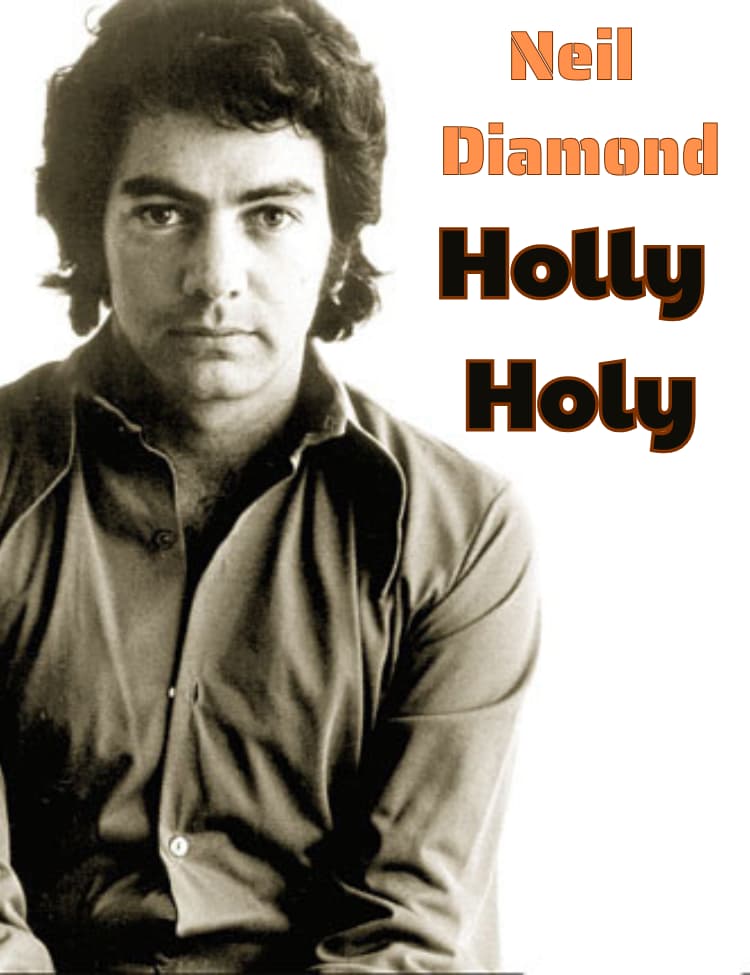
A Spiritual Awakening Wrapped in a Timeless Melody
For those of us who came of age in the late 1960s and early 1970s, certain songs aren’t just tracks on an album; they’re bookmarks in the chapters of our lives, resonating with the hopes, dreams, and quiet revolutions of the era. Among these indelible sonic markers, Neil Diamond‘s “Holly Holy” stands tall – a powerful, almost spiritual anthem that transcended the typical pop fare of the day. Released in 1969, a year teeming with both societal upheaval and musical innovation, “Holly Holy” quickly ascended the charts, reaching a respectable number six on the Billboard Hot 100, solidifying Neil Diamond‘s place not just as a songwriter of romantic ballads but as an artist capable of profound introspection and universal appeal.
The story behind “Holly Holy” is as intriguing as its composition. Emerging from a period of deep personal reflection for Diamond, the song wasn’t conceived as a commercial single but rather as a heartfelt expression of his own spiritual quest. He had been exploring themes of faith and humanity, grappling with the larger questions of existence, and “Holly Holy” was the melodic outcome of that journey. It’s often said that art imitates life, and in this case, the song became a vessel for Diamond‘s evolving understanding of connection – not necessarily to a specific religious doctrine, but to a shared human experience, a sense of collective purpose. This deeply personal genesis is what imbues the song with such raw emotion and authenticity, making it resonate with listeners from all walks of life, regardless of their own spiritual leanings.
The meaning of “Holly Holy” is multi-layered, inviting individual interpretation while still conveying a powerful central message. At its core, it speaks to the idea of universal love and the unifying power of shared humanity. The repeated phrase “Holly Holy” isn’t a direct religious invocation in the traditional sense, but rather a chant-like affirmation of something sacred and pure – perhaps the inherent goodness within us all, or the divine spark that connects every living being. It’s a call to embrace empathy, understanding, and compassion in a world often fractured by division. For many, it evoked a sense of hope and solidarity during a turbulent time, a reminder that even amidst chaos, there was a fundamental truth of love that could bind us together. The song’s structure, with its gospel choir backing and swelling instrumentation, further amplifies this sense of communal uplift and spiritual awakening, creating an almost transcendent listening experience. It’s a feeling that, even decades later, can transport you back to a time when idealism felt tangible, and the possibility of a better world seemed within reach.
“Holly Holy” was more than just a hit song; it was a testament to Neil Diamond‘s evolving artistry and his ability to tap into the collective consciousness. It appeared on his 1969 album, Touching You, Touching Me, an album that showcased his versatility and willingness to explore more profound lyrical themes. The track’s enduring popularity is also a testament to its timeless message. Its arrangement, particularly the prominent use of the gospel choir, was a deliberate choice by Diamond and producer Tommy Cogbill to enhance the song’s spiritual resonance, giving it a soaring, almost anthemic quality. It wasn’t a departure from his usual style as much as an expansion of it, showing a depth that some might not have initially attributed to the crooner of “Sweet Caroline.” Even today, when “Holly Holy” plays, it evokes a powerful sense of nostalgia, a yearning for simpler times perhaps, but also a reminder of the enduring power of music to inspire, to heal, and to connect us to something larger than ourselves. It’s a song that, like a cherished old photograph, can instantly transport you back, not just to a moment in time, but to a feeling, a memory, a part of who we once were, and perhaps, still are.